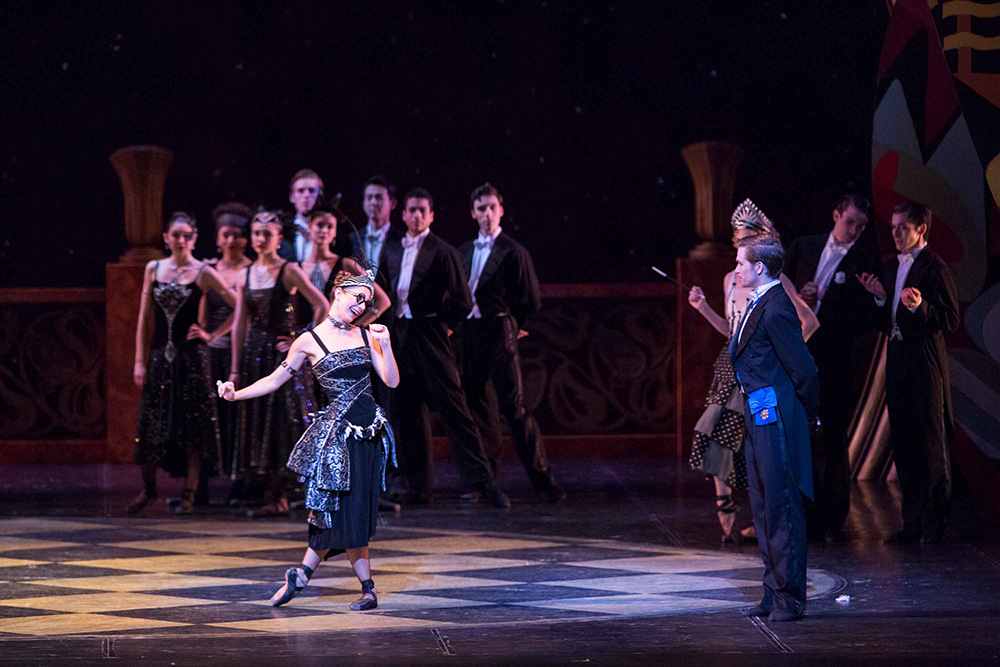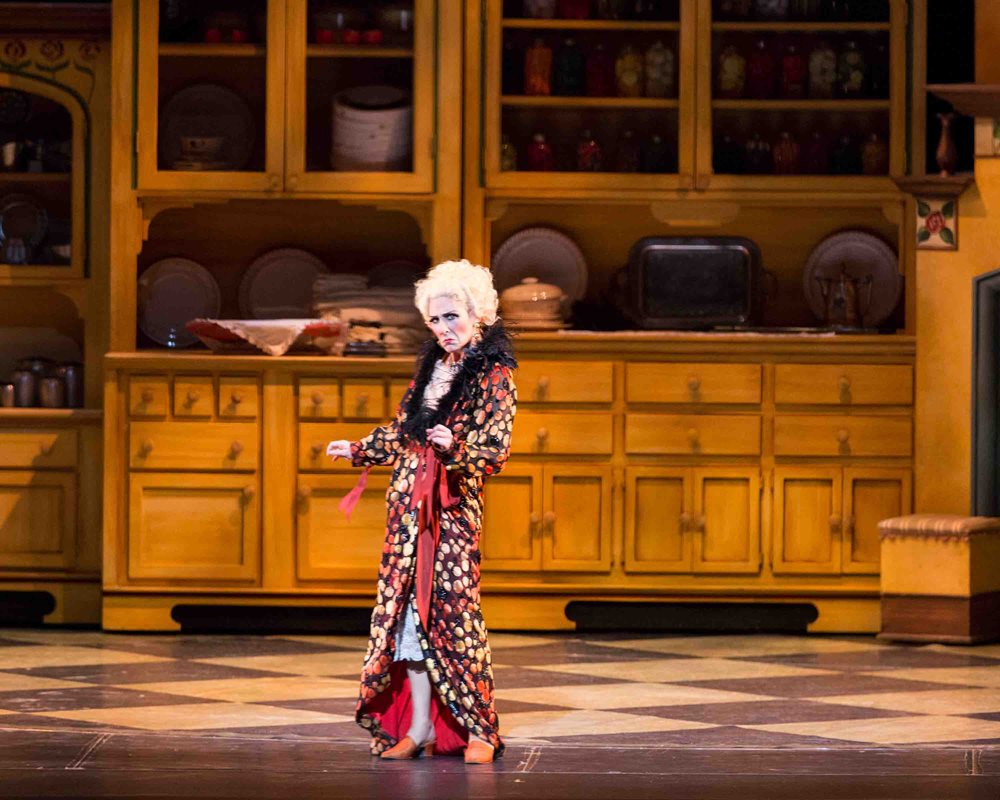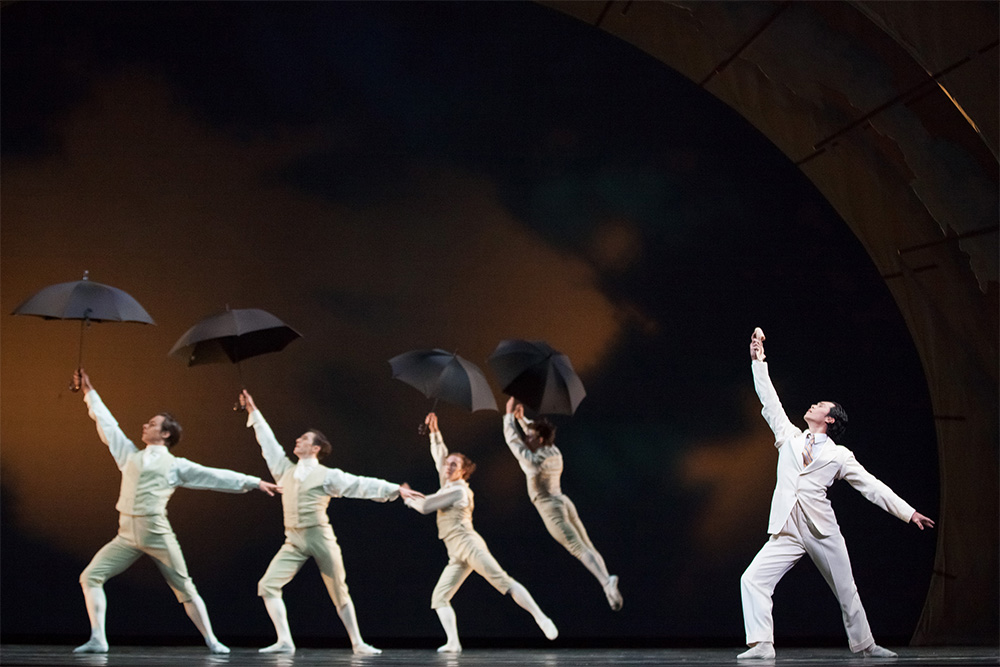Ballet
Nouvelles+
Cinderella: Choreographing Comedy
by Caroline Dickie
9 février 2023

Former Corps de Ballet member Shaila D'Onofrio and Harrison James with Artists of the Ballet in Cinderella. Photo par Aleksandar Antonijevic.
Tragic stories such as Swan Lake and Giselle are so prominent within ballet’s narrative tradition that it can be easy to forget how funny the art form can be. Lighthearted comedies actually form a significant part of the international repertoire, with Coppélia, Don Quixote and La Fille mal gardée ranking among the more popular story ballets. Choreographer James Kudelka has enjoyed great success with his 2004 production of Cinderella which weaves humour into a familiar story of loneliness and romance. But as Kudelka has observed, it takes work to be funny. We wrote to Kudelka to gain his insight into choreographing comedy.
“I wouldn’t be the first to say that comedy is serious business,” he writes. “It takes a lot of research and risk to find the right tone and the right voice choreographically, and there is no assurance that every spectator will see the humour.”
So how to strike that perfect tone?
“Of course, casting is important. But for a lasting comic effect there has to be a real knowledge of why the laugh happened in the first place. Timing is important and, in the case of dance, musicality. Comedy is not a matter of improvisation. It is deeply controlled and is a matter of interpretation and the performer’s choices. Too much repetition or unwillingness on the part of the performer to succumb to the joke can spoil it. You can also distill comedy to a point that it loses spontaneity and kills it.”

Rebekah Rimsay in Cinderella. Photo par Aleksandar Antonijevic.
In Cinderella Kudelka creates a hilariously flawed world of social climbers and sycophants. Even so, the production never strays into the realm of the ridiculous. Even the Stepsisters, whose foibles loom large, remain characters rather than caricatures. As a result, the whole production endears. Comedy, done well, can create a powerful intimacy among performers and spectators.
“Laughter is a very good icebreaker,” Kudelka writes. “One of my favourite comic opening moments comes with the chickens at the beginning of La Fille mal gardée. As a young dancer I would go down to the stage and stand in the wings to listen to the audience laugh. It set the tone of lightheartedness for the rest of the evening. Comedy and laughter can offer permission to the public to engage and offers some assurance that they will come with you, whether it’s the little chuckle in the throat or the thigh-slapping belly laugh, which is much harder to get.”
Even with the most tightly rehearsed productions, some element of comedy comes down to the magic of live performance and the unique conditions surrounding the show on a given day.
“I watched Stuttgart Ballet perform The Taming of the Shrew at the Metropolitan Opera House in New York City in the 1970s with the original cast and laughed from start to finish,” writes Kudelka. “For me, subsequent performances never rose to the level of humour of that cast. It is an enigma and leads me to believe it is much easier to kill a joke than a pair of star-crossed lovers.”

Naoya Ebe with Artists of the Ballet in Cinderella. Photo par Aleksandar Antonijevic.
Cinderella is onstage 10 mars — 19. En savoir plus
Cendrillon est un cadeau du Comité bénévole, le Ballet national du Canada.
